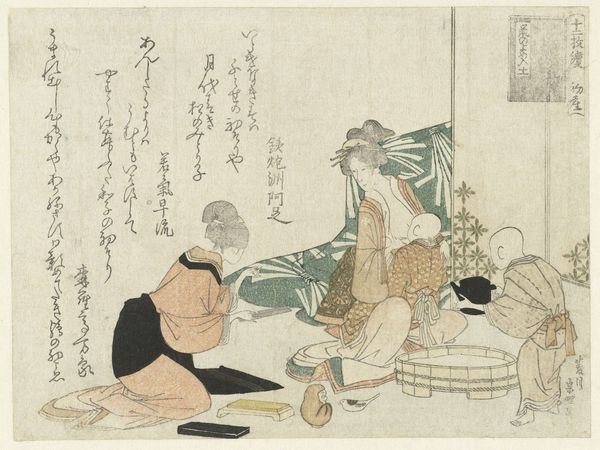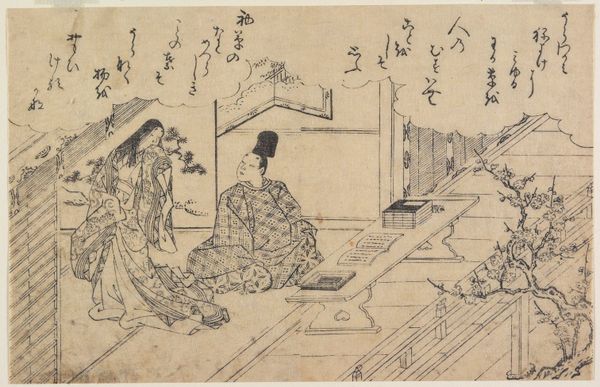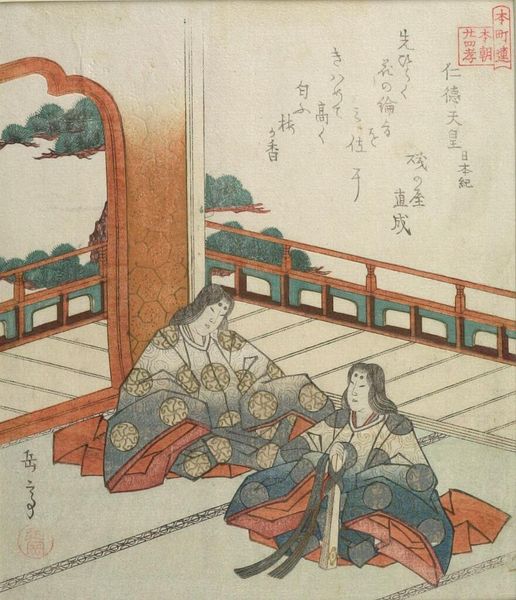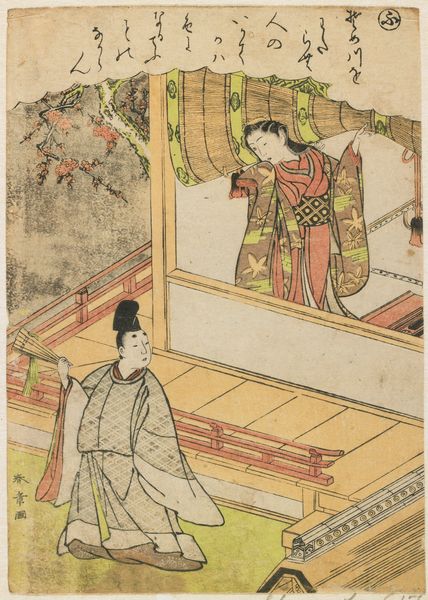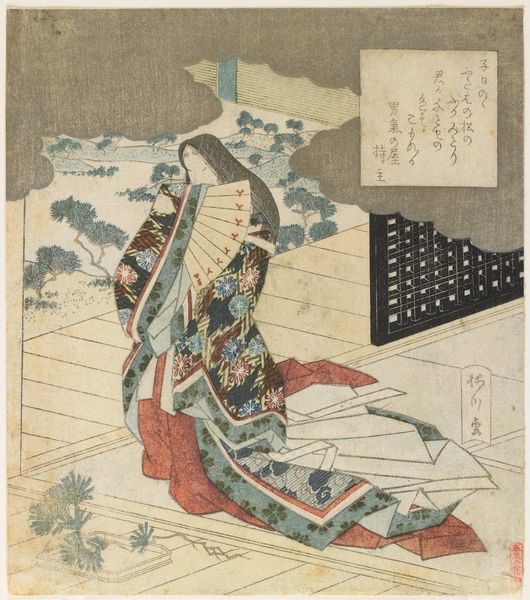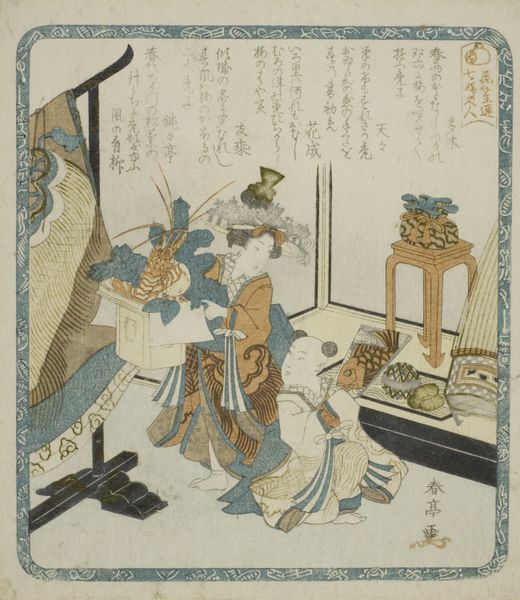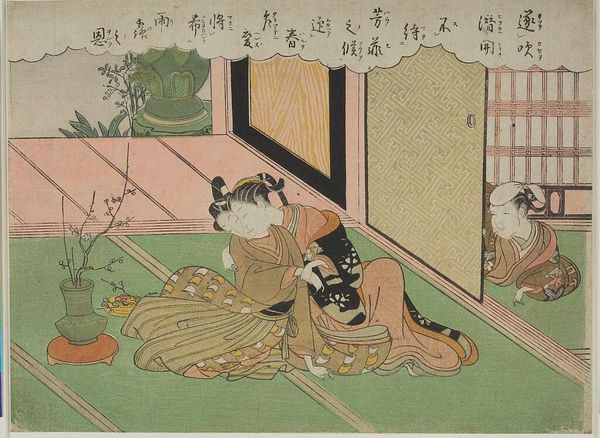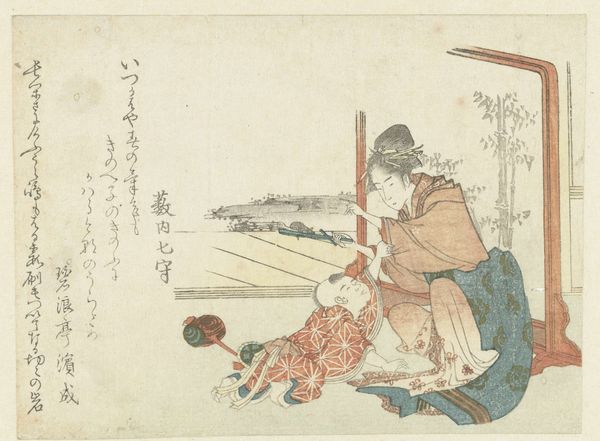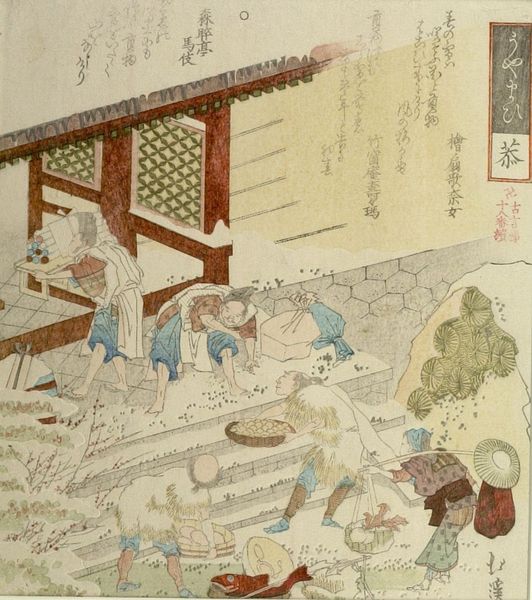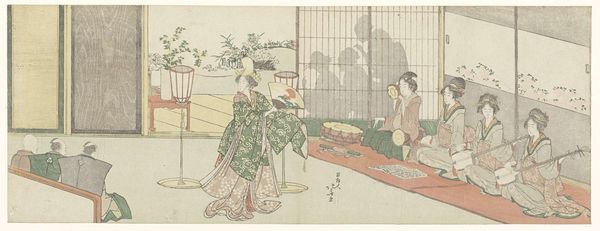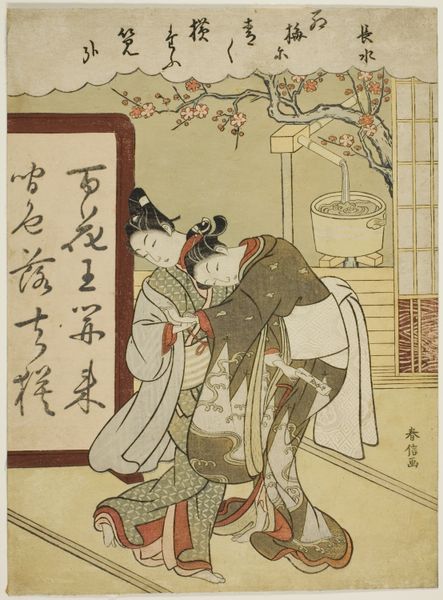
Twenty-four Japanese examples of filial piety for the Honchôren c. 1821
0:00
0:00
yashimagakuteiwudaoyueting
Rijksmuseum
print, woodblock-print
#
narrative-art
# print
#
asian-art
#
ukiyo-e
#
figuration
#
woodblock-print
Dimensions: height 204 mm, width 182 mm
Copyright: Rijks Museum: Open Domain
Yashima Gakutei made this woodblock print, titled "Twenty-four Japanese examples of filial piety for the Honchôren," in Japan, sometime in the first half of the 19th century. It depicts two figures inside a building, possibly engaged in a moment of reflection or conversation. This work emerges from a cultural context deeply influenced by Confucian ideals, where filial piety—respect and care for one's parents and ancestors—was a cornerstone of social order. The print's title explicitly connects it to this tradition, suggesting that the scene illustrates a story of exemplary filial conduct. The presence of text within the image further emphasizes its didactic function, likely providing context or moral instruction related to the depicted scene. Understanding the social and cultural institutions that promoted these values—such as the family, the education system, and the government—is essential for interpreting this artwork. Through such images, the print may reflect and reinforce these ideals. Detailed research into the social history of the Edo period in Japan, along with textual analysis of the inscriptions, will provide much deeper insights into the art.
Comments
No comments
Be the first to comment and join the conversation on the ultimate creative platform.
